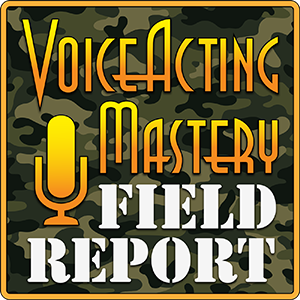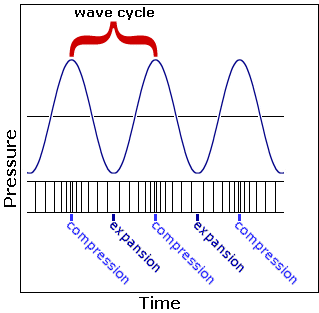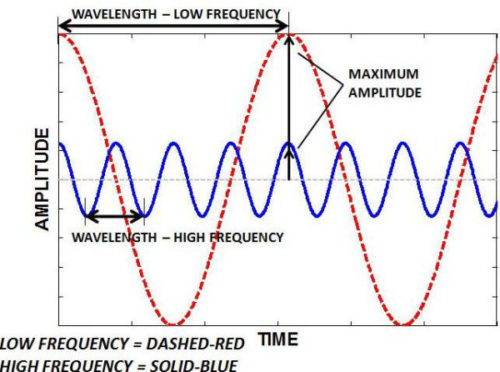VAMFR 013 | Interview with Tony Oliver, Part 2

VAMFR 013 | Interview with Tony Oliver, Part 2
Welcome to episode 13 of the Voice Acting Mastery: Field Report podcast!
In this episode, our correspondent, Tom Bauer continues his interview one of his personal voice over mentors: Tony Oliver.
Tom first met Tony taking a class with him in November of 2012 and he’s been fortunate enough to work with him as an actor on a few anime shows. Tony is probably most famous for his voice acting work in anime, taking on such roles as Rick Hunter in Robotech and Lupin in the Lupin the Third TV series. Tony also worked for many years as a writer and producer on the famous Mighty Morphin’ Power Rangers television series for Saban Entertainment. If that wasn’t enough, Tony is also a talented director and teacher, directing such popular anime titles as Gurren Lagann and Hunter X Hunter.
In part 1 of this interview, Tony was telling us in detail how his personal life experiences led him to where he is today as a voice over director. He also emphasized how important it is for an actor to be training constantly so that they’re ready for anything when it comes time to perform.
In this episode, Tony talks about what he learned in the early days of his voice over career and how he applies his personal acting methodology both as a director, when he’s guiding the performances of other actors, and as a teacher, when he’s working with his students. Tom and Tony also talk about what it takes to succeed as a voice actor and how to thrive in an industry where you constantly face rejection. They begin this part of their chat with Tom asking Tony about the kinds of challenges he faced while he was developing his skills as a voice actor.
The VAM Field Report will be released on the 1st Wednesday of every month so stay on the look out for it!
Download VAM Field Report Episode #13 Here (MP3)
VAM 117 | Interview with America Young, Part 1
Welcome to episode 117 of the Voice Acting Mastery podcast with yours truly, Crispin Freeman!
As always, you can listen to the podcast using the player above, or download the mp3 using the link at the bottom of this blog post. The podcast is also available via the iTunes Store online. Just follow this link to view the podcast in iTunes:
http://www.voiceactingmastery.com/podcast
Welcome to the first part of my interview with a woman who seems to have so many different abilities that it’s difficult to know quite how to categorize her! America Young has worked as a voice actress, an on-camera actress, a commercial actress and a stunt performer in addition to directing and producing her own films! She’s been working in the entertainment industry in one form or another since she was 6 years old! Her breadth of experience is truly astounding and I could spend multiple episodes just talking about the various projects she’s worked on. However, for the purposes of this podcast, I decided to focus on America’s voice acting resume and how she was able to translate her theatrical and stunt experience into becoming a motion capture actress.
One of the most interesting developments in the entertainment industry in the past decade or so has been the incorporation of motion capture performances into films and video games. Motion Capture, also called Performance Capture, is a means of recording an actor’s performance not on film, but digitally inside the virtual 3D space of a computer. This allows animators to then manipulate that performance and use it to bring characters to life in films and video games.
Motion Capture is utilized extensively in the video game industry to help animate characters for gameplay. It’s also used to create in-game cinematics. More and more actors are being asked not only to voice a character in a video game, but to supply a physical performance for that character as well. Since this is such a new and developing niche, I felt it was important to share with my audience what it takes to work in the world of Motion Capture.
While there are certain techniques specific to motion capture that you definitely must master in order to be successful, motion capture is still acting; it requires the same solid acting skills that any performance medium does. Therefore, in the first part of this interview, America and I discuss her background as a performer. We cover what inspired her to pursue acting, what challenges she faced early in her career, and how she was able to break into the industry. Following America’s journey towards becoming a professional actress in film and voice over is very enlightening. It will help you understand the foundational skills you as a voice actor need to develop in order to be an effective Motion Capture performer. That way you can be prepared when the opportunity arrises!
Download Voice Acting Mastery Episode #117 Here (MP3)
VAMFR 012 | Interview with Tony Oliver, Part 1

VAMFR 012 | Interview with Tony Oliver, Part 1
Welcome to episode 12 of the Voice Acting Mastery: Field Report podcast!
In this episode our correspondent, Tom Bauer is honored to interview one of his personal voice over mentors: Tony Oliver.
Tony’s résumé runs the gamut in the entertainment and voice over industry. He is probably most famous for his voice acting work as Rick Hunter in the ever-popular anime series Robotech. He’s also played the voice of the mischevious Lupin in the Lupin the Third anime TV series. Tony worked for many years as a writer and producer on the famous Mighty Morphin’ Power Rangers television series for Saban Entertainment. If that wasn’t enough, Tony is also a talented director and teacher, directing such popular anime titles as Gurren Lagann and Hunter X Hunter.
Tom first met Tony when he took one of his voice acting classes in November of 2012. Soon after, Tom had the good fortune of getting to know Tony as a director when they worked together on the anime series, Magi: The Kingdom of Magic, where Tom was cast as Nero and Ren Hakuyu.
In this first episode, Tom focuses on Tony’s early career. Tony explains how he got his start as a voice actor and how his breadth of experiences and the challenges he faced led him to where he is today as a voice over director. He also stresses the importance of continually training yourself as an actor so that you’re prepared for anything when it comes time to perform. But Tom is happy to let Tony tell you more about that!
The VAM Field Report will be released on the 1st Wednesday of every month so stay on the look out for it!
Download VAM Field Report Episode #12 Here (MP3)
VAM 116 | The Computer Skills and Audio Knowledge You Need to Be a Voice Actor, Part 3
Welcome to episode 116 of the Voice Acting Mastery podcast with yours truly, Crispin Freeman!
As always, you can listen to the podcast using the player above, or download the mp3 using the link at the bottom of this blog post. The podcast is also available via the iTunes Store online. Just follow this link to view the podcast in iTunes:
http://www.voiceactingmastery.com/podcast
In the first episode of this three part series, I outlined the basic computer skills you need in order to be able to record professional quality audio in your home studio. In the second episode, I expanded on that subject and explained the actual process of digital recording using simple metaphors. After listening to those episodes you should have a much clearer understanding of how your computer works and how your microphone and audio interface process and record audio as digital information. If you haven’t listened to the the previous two episodes in this series yet, I highly recommend that you review them both before continuing. As I conclude my discussion of this topic, I’m going to be building on the information I shared with you in the last two episodes.
In this third and final part of the series I want to talk about how to use your home recording setup to its fullest potential. I’ll be revealing to you the settings that professionals use to maximize the quality of their recordings. I’ll explain the differences between different digital audio formats, and I’ll also be warning you about some of the most common mistakes voice actors make when recording at home so you can avoid them! As I’ve mentioned previously, it may be good for you to have a notebook nearby to write down the terms and ideas I’ll be discussing. After listening to this series of episodes, you should have a solid foundation for understanding the fundamentals behind professional quality digital audio recording.
If you have any thoughts, thank you’s or questions about this 3-episode series, please feel free to leave a comment on this blog post!
I’m also getting ready to do my next round of Q&A here on the podcast, so if you’d like a chance to have your question answered in a future episode, you can call the Voice Acting Mastery phone line at 323-696-2655. Please remember to state your first name and what city in the world you’re calling from before leaving your message. Thanks for listening, and I’ll see you in the next episode!
Download Voice Acting Mastery Episode #116 Here (MP3)
VAMFR 011 | Marketing and Self-Promotion for Voice Actors, Part 3

VAMFR 011 | Marketing and Self-Promotion for Voice Actors, Part 3
Welcome to episode 11 of the Voice Acting Mastery: Field Report podcast!
In this episode our correspondent, DanWill McCann, concludes his special report on how to market and promote yourself as a voice actor!
As was mentioned in parts 1 and 2 of this report, while attending a Los Angeles area convention called Wondercon, DanWill was able to ask several talented and successful voice actors about how they approach these topics. They were generous enough to share their insights, and DanWill found their methods and stories very valuable. In part 1 of this report, DanWill discussed business cards, websites, and the importance of both acting training and diligent participation in the industry. In part 2, he discussed social media, its rising impact on the voice over world, and some best practices for how to use it.
In part 3, DanWill would like to address the subject of agents and their role in getting your name out there, as well as what kinds of self-promotion and networking can be done at conventions like WonderCon. He’s also going to talk about demos, which are a major component of every successful voice actor’s marketing strategy.
Once again we’re lucky to hear from five impressive voice acting talents, including Dino Andrade, who recently announced he’ll be voicing the Scarecrow once again in Batman: Arkham Underworld, and Rikki Simons, who played the lovable Gir from Invader Zim. David Sobolov lends his voice to Draxx in Marvel’s animated series, Guardians of the Galaxy, and he was kind enough to speak with us as well. DanWill will also share advice from Sandy Fox, the voice of the Black Lady and Sailor Chibi Moon from Sailor Moon Crystal, and Lex Lang, an ADR expert on voice matching and creature noises whom you may have heard in recent movies like Jurrasic World and Deadpool. So here we go!
The VAM Field Report will be released on the 1st Wednesday of every month so stay on the look out for it!
Download VAM Field Report Episode #11 Here (MP3)
VAM 115 | The Computer Skills and Audio Knowledge You Need to Be a Voice Actor, Part 2
Welcome to episode 115 of the Voice Acting Mastery podcast with yours truly, Crispin Freeman!
As always, you can listen to the podcast using the player above, or download the mp3 using the link at the bottom of this blog post. The podcast is also available via the iTunes Store online. Just follow this link to view the podcast in iTunes:
http://www.voiceactingmastery.com/podcast
In the last episode, I outlined the basic computer skills you need in order to be able to record professional quality audio in your home studio. I spoke in depth about the structure of your computer and how it interfaces with any external audio devices you may be using such as a USB microphone or a USB audio interface. If you haven’t listened to the previous episode yet, I highly recommend that you review it before continuing. As I move forward, I’m going to be building on the information I shared with you last time.
In this episode I want to talk in depth about the process of recording audio on a professional level. Most beginning voice actors do not have a solid understanding of what it means to record professional level audio. With the proliferation of smart phones and other consumer level portable digital recording devices, we’ve all become very accustomed to recording both audio and video on the spur of the moment. We often watch videos and listen to audio that our friends and family post on social media websites. While these shared moments of audio and video may be spontaneous and candid, they almost never approach a level of quality that is acceptable for professional audio environments. Just imagine if the sound in the next big movie or TV show you decided to watch was recorded on your cell phone. It would be difficult for you to listen to it for long without being frustrated by the low quality of the audio. It takes studio professionals countless hours of focused attention and hard work to achieve the crystal-clear dialogue, sound effects and music you hear in your favorite Hollywood films and television series. If your goal is to be a professional voice actor who regularly collaborates with these industry professionals, you need to know how to achieve a more rarified level of audio quality in your own recordings.
I’m going to explain to you the basics of digital recording and what it takes to record audio on a professional level from your home studio. While a complete course on how to record studio-grade audio is beyond the scope of this podcast, I do want to provide my listeners with straightforward metaphors for understanding the process. I also want to address some common mistakes and misconceptions beginners often stumble over when approaching digital recording. I’ll explain in detail what’s going on inside your audio equipment so you’ll be better prepared for the next episode, where I’ll share best practices and more mistakes to avoid when recording yourself. While some of this might seem complicated at first, I’m going to do my best to simplify things. I want you to have a solid understanding so you can spend more time focusing on your voice acting performances and less time stressing about technical issues, while still producing professional quality audio. As I mentioned in the last episode, it may be good for you to have a notebook nearby to write down some of the terms and ideas I’ll be discussing. Let’s get started!
As always, you can check out the Toolbox section of this website for my recording software and hardware recommendations.
In the beginning of this episode, I promised to include diagrams here on the website to help show how sound actually works. When you hear something, your ears are responding to sound waves that are moving through the air. These sound waves compress and stretch the molecules in the air around you, creating vibrations that your ear drums can detect. The faster the compression and stretching of air that occurs, the higher the perceived pitch of the sound. The slower, the lower the pitch. You can see that compression and stretching in the diagram below.

This compression rate is also called the frequency of the sound, since the pitch of a sound is determined by how frequently the sound waves strike your ear drum within a certain time period. The volume of a sound depends on the size of those waves, which is also called their amplitude. The higher the amplitude of a sound wave, the louder you perceive it to be and vice versa. So a quiet, high pitched sound has a low amplitude and a high frequency, while a loud, low pitched sound has a high amplitude and a low frequency. You can see this in the diagram below. The solid blue line is the quiet, high pitched sound wave and the dashed red line is the loud, low pitched sound.

Download Voice Acting Mastery Episode #115 Here (MP3)
